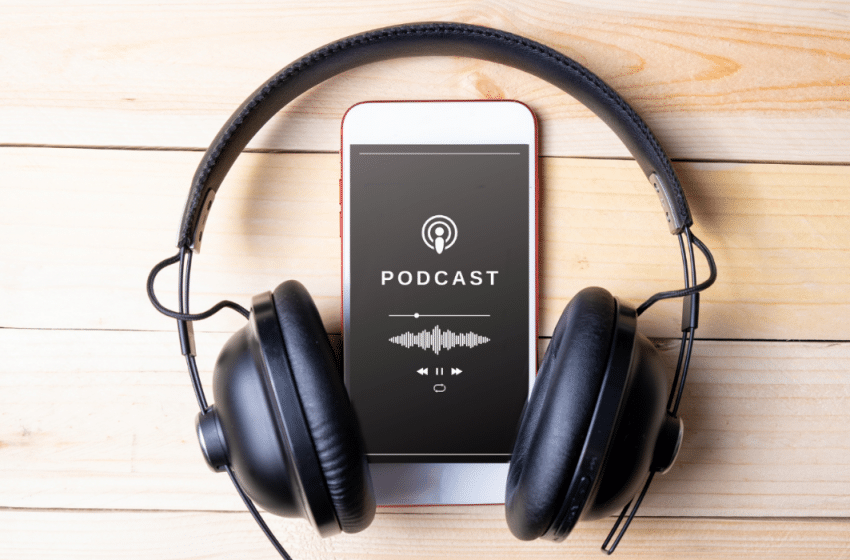Sennheiser Spectera sits at center of NEP Australia’s audio overhaul

LONDON —You might have noticed that my column does not often mention podcasts. That’s not because I don’t see their importance — I am a devoted follower of many podcasts, perhaps too many, from broadcasters and other sources. They continue to play a vital role in creating communities of interest and provide a vast diversity of information and opinions about every subject imaginable. I hesitate because my main concern has always been to emphasize the distinctiveness of the audio medium as a smart and simple way of bringing people together in real time, connecting them to their locality or country.

For this column, however, I will restore the balance by talking about podcasting with one of my best-informed colleagues. Apart from her practical experience in the strategy area at the Finnish public broadcaster, YLE, Aura Lindberg was the Reuters Institute Journalism Fellow at Oxford University from 2018 to 2019 and is now working for a Ph.D. in journalism. When asked if the roles of researcher and strategist complement each other, Lindberg expressed her belief there is no conflict so long as you retain your impartiality while gaining insights that being immersed in the industry offers. With this strong sense of involvement, she hopes her research findings will benefit actors in the audio field and contribute to a successful transition from broadcasting to digital audio distribution.
When I asked her how things had changed since she was at Oxford, Lindberg highlighted that, back then, podcasting in newsrooms was in its infancy. Broadcasters were struggling to understand podcasting, allocate resources and find effective publishing methods. However, over the past five years, the podcasting scene has undergone significant professionalization. Journalists have honed their skills as podcasters, while platforms and the podcasting industry have evolved. The COVID-19 pandemic has also played a role in increasing audience demand for high-quality podcast content.
Struggling for attention
Broadcasters are aware there are “only so many hours in the day” and, therefore, they are locked in a significant struggle for audience attention. Lindberg argues that with podcasting gaining increasing traction, existing broadcasters face a unique and unprecedented challenge — they no longer “own the airwaves.” With numerous platforms to choose from audiences have become more demanding and prepared to seek out relevant topics and content to the point that broadcasters can no longer rely solely on traditional distribution methods. This is the right moment, she explains, for broadcasters to decide whether to focus on developing their own platforms or to distribute content across multiple platforms — there’s no easy answer to this question. The key lies in recognizing that they cannot treat podcast production as a supplementary offering; it needs to be planned and distributed in a deliberate, thoughtful way, just like conventional radio scheduling. For commercial broadcasters there is an added challenge of how to monetize podcast content. In short, you cannot afford to ignore podcasting. However, how can you justify something that consumes resources without providing income?
How can you justify something that consumes resources without providing income?
It’s clear to Lindberg that broadcasters’ responses to the changing audio landscape vary between different markets. Traditionally, the Nordic countries, where she focuses her research, have well-established broadcasters, reaching over 80% of the population weekly. Here, broadcasters have successfully digitalized their content offerings and can actively compete with the tech giants like Spotify and Apple. However, continuous technological and content creation innovation is necessary to maintain relevance. In other countries, she has noticed, where digitalization has been slower, broadcasters are genuinely struggling to adapt to the rapidly growing digital audio market.
When I asked Lindberg to identify emerging trends, it was interesting to hear her conviction that, in some respects, the audio world is coming to resemble the video market, with production companies adapting successful formats for different markets — something that, in my experience, has rarely happened in traditional radio. In terms of content, she has not noted much novelty in the past few years; major developments have centered around delivery. She watches with interest the growing use of video podcasting on platforms like YouTube to reach younger audiences, while wondering whether some of these are just less engaging versions of standard YouTube video material. New to me was the concept of minicasts — short episodes in between longer ones, positioned to ensure continuity and maintain interest. Unsurprisingly, she notes with interest the perennial debate around whether broadcasters should release exclusive content behind paywalls or offer everything for free.
The impartiality issue
With a variety of independently produced news podcasts now gaining popularity, I raised with her concerns about impartiality — whether we might come to consume our news only through the filter of political opinions, either overt or implicit. She doesn’t seem unduly concerned by that threat, comparing the current situation to the early days of blogs, where rules and standards were still being established. Clearly, professional journalists have a responsibility to be clear about their commitments and positions. However, she believes listeners are discerning and will ultimately hold journalists accountable for any breaches of trust. That may work in the Nordic countries; however, I’m rather more skeptical elsewhere.
Lindberg expressed great optimism about the future of audio. The trend of consuming audio content continues to grow, providing numerous opportunities to develop new concepts and formats. However, she cautions against the lack of viable business models for podcasting. If there are no real opportunities to grow podcasting as a business, there is a risk that development will slow and inhibit creativity. I think we shall be hearing more from Lindberg in the future — her Ph.D. studies at Tampere University focus on the Nordic public media organizations, analyzing their transition into digital audio providers, emerging from the previous broadcasting model. This geographic area has shown immense innovation; I, for one, will continue to watch it with great interest.
More from Dixon’s Corner
The special responsibilities of public radio
Ensuring trust remains in radio
Could AI replace the radio news writer?





















